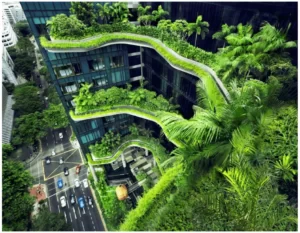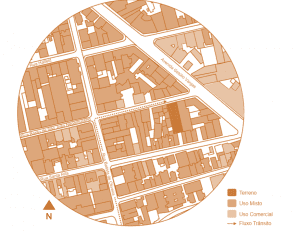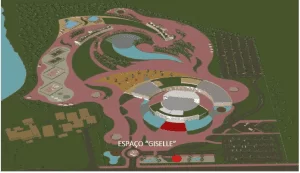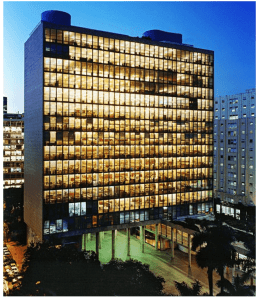ORIGINAL ARTICLE
SILVEIRA, Maria Letícia [1]
SILVEIRA, Maria Letícia. Landscaping allied to urban everyday life: discovering the natural soundscape. Revista Científica Multidisciplinar Núcleo do Conhecimento. Year 06, Ed. 02, Vol. 01, pp. 85–95. February 2020. ISSN: 2448-0959, Access link: https://www.nucleodoconhecimento.com.br/architecture/soundscape
ABSTRACT
The presented article investigates the influence exercised by landscaping in urban life and proposes its presence, allied to sustainability, in the connection between city and nature. Considering the “natural soundscape”, the research studies contemporary daily life, composed of a generation that values sustainability and seeks to resume contact with nature, resulting in improvements in their emotional, social and academic well-being. The problem discussed refers to the application of landscaping in public spaces in Belo Horizonte, with the general objective of understanding how the natural environment affects the user – in physical and emotional aspects. To this end, bibliographic research was carried out on the subjects of natural soundscape, landscaping and the relationship between nature and human health, in addition to case studies related to the research. It was concluded that landscaping is of vital importance in large urban centers and, in a city like Belo Horizonte, it must be planned aiming at the well-being of the entire population.
Keywords: Landscaping, Soundscape, Sustainability, Connection.
INTRODUCTION
The presented article refers to the universe of environment design, its application in landscaping promoting the creation of an environment with natural elements in the midst of built environments and the contribution of the final project to the well-being of individuals in the urban area, through the vegetation and the natural soundscape.
The research problem was to identify whether landscaping should be crucially applied in public spaces in Belo Horizonte, in order to awaken the connection between the user and nature. The general objective is to understand how the natural environment affects the user physically and emotionally and, specifically, some other objectives were listed, such as understanding what the natural soundscape is; identify the real need of the user; understand landscaping as an element that is not only pleasant, but also efficient and sustainable and, finally, offer reports to the academic community on the subject, which is still little explored in the area.
2. DEVELOPMENT
2.1 CONCEPTS
2.1.1 THE NATURAL SOUND LANDSCAPE
The term “soundscape” appeared in 1977, coined by author R. Murray Schafer in his book A Afinação do Mundo. According to R. Murray Schafer (1977, p. 22), “the soundscape is any field of acoustic study. We can refer to a musical composition, a radio program or even an acoustic environment as soundscapes”. The author also argues that the soundscape of a place translates its social references and its evolution, since it is directly related to the well-being of the society that produces it.
The author lists three aspects to be analyzed in the soundscape: fundamental sound, signals and sound marks. Fundamental sounds are defined by tonality and difficult to examine, as they become auditory habits, such as water and wind. The signals, in turn, are perceptible and stand out from the fundamental sounds, like a ship’s whistle. Finally, sound marks are characteristic sounds of a specific place, bringing identity to a region or people.
In general, the soundscape also encompasses the sounds of human beings. In an urban environment, horns, voices and music make up the soundscape, but in the natural soundscape, human sounds do not stand out. The sea, water transformations, wind, land and animals make up the natural soundscape and it is often equipped with landmarks that make it original and unique. Even where life isn’t abundant, there is sound – you can hear glaciers crashing in remote locations, volcanoes sounding alarms before they erupt, and water sloshing beneath the Earth’s surface.
2.1.2 NATURE AND WELL-BEING
Man is a paradoxical nature element that, since prehistory, develops and enjoys in the environment, but, even with all the academic and technological advances that we witness today, it is still not able to respect it. Now, with the extreme distance between human beings and nature, isolating ourselves in built environments, we begin to see physiological and psychological problems in the population.
A study led by Peter James (2018) concluded that the proximity between housing and green areas influences a longer life expectancy and, mainly, a healthier life.
It is known that the dust that emanates from natural environments filled with fragments of bacteria encourages children’s immune systems to develop from an early age and not cause hyperreactions such as asthma. Researcher Peter James also raises the hypothesis that the benefits related to other diseases are caused by stimuli from nature in relation to the practice of physical activity and social engagement and, in addition to reducing exposure to pollutants, it also improves mental health.
Richard Louv (2016), in his book “A Última Criança na Natureza”, argues that the experience in nature is not only important for the development of children’s physical and emotional health and well-being, but that, far beyond, it also shapes crucial childhood memories and learnings.
Image 1: In São Paulo, Ibirapuera Park serves as a refuge for children and young people in the middle of the largest urban center in Brazil
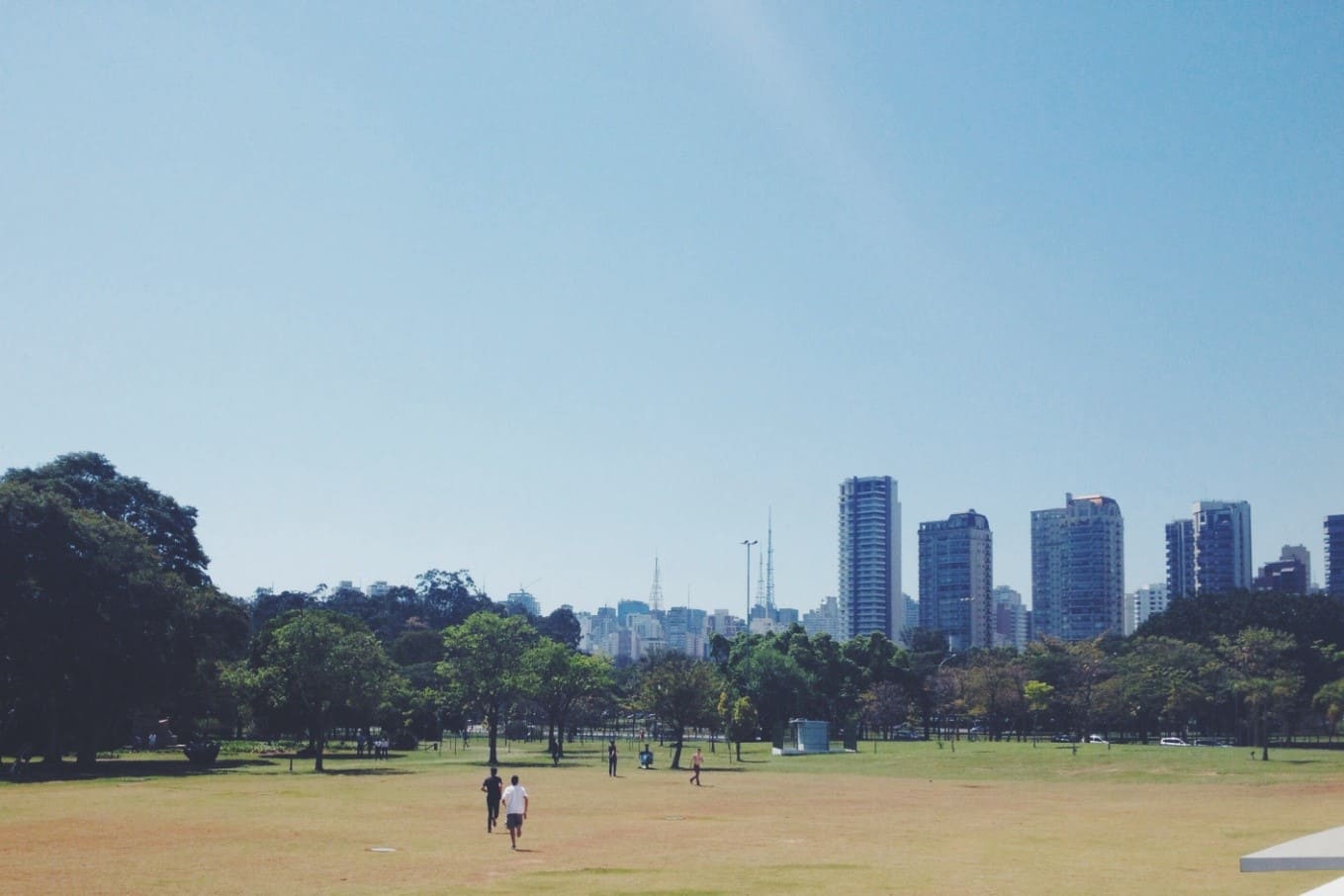
With the term “nature deficit disorder”, Richard Louv describes the costs of man’s low relationship with nature, such as less use of the primary senses and difficulty in attention, in addition to higher rates of diseases as already perceived and verified by the study cited earlier.
2.1.3 LANDSCAPING
According to the wording of Pensamento Verde (2013), landscaping adapts to the reality in which it is inserted and integrates architecture, users and nature. By planning plans, managing free areas and combining natural resources with aesthetic perception, it is possible to create textures, shapes and colors that give rise to vast landscapes.
Thus, we can infer that in the midst of large urban centers, landscaping is an important and essential point of balance between the city and nature, offering rest, leisure and green connection for the inhabitants. When considering the natural soundscape, landscaping also rescues cultural elements from each region, reinforcing individuality and local origin.
Image 2: In Belo Horizonte, families and friends gather at Parque Municipal das Mangabeiras for greater contact with nature
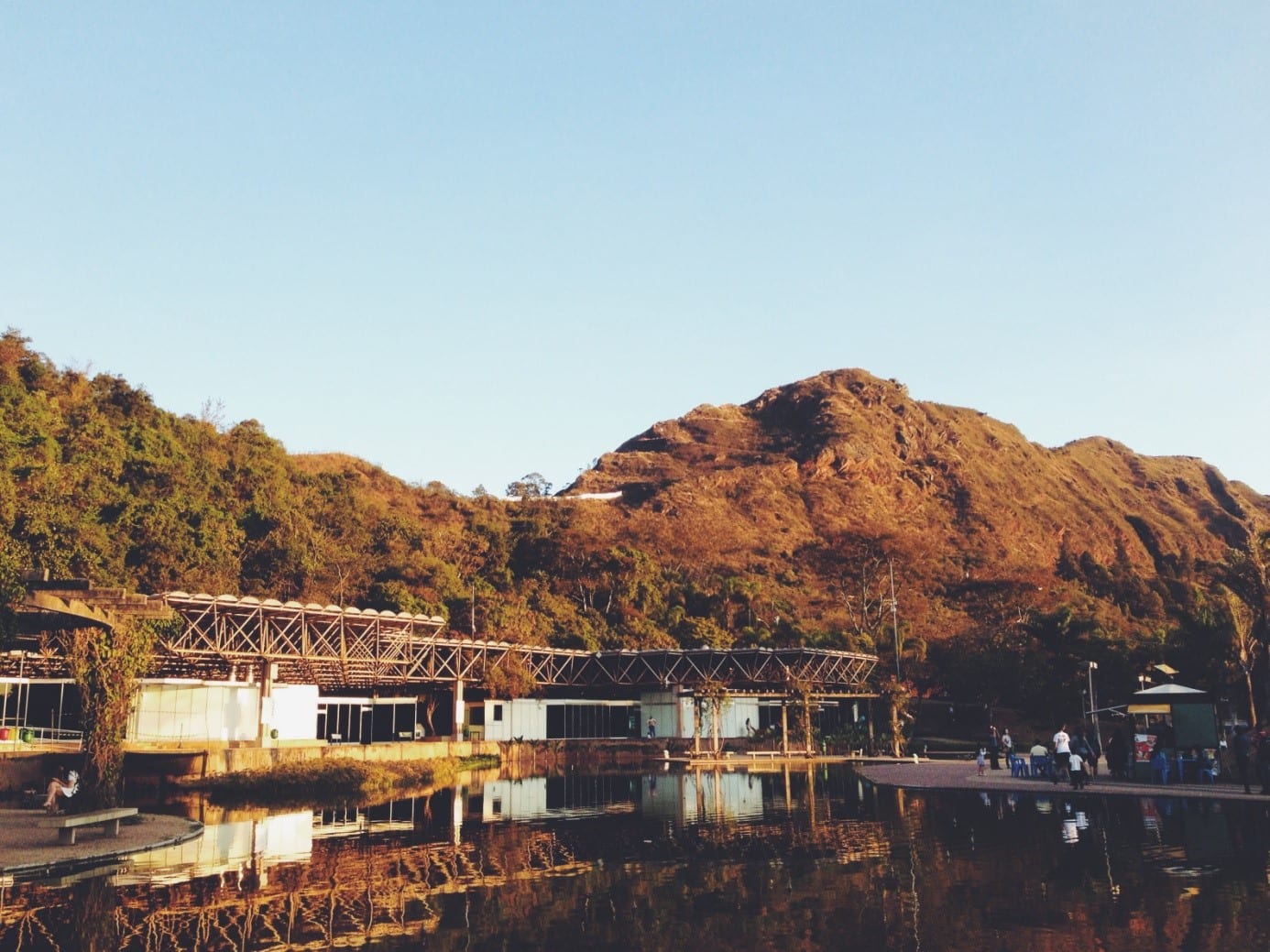
Today, we design with Generation Z in mind, which, according to Gian Kojikovski (2017), accounts for 26% of the world’s population and 30 million in Brazil alone, being the first generation born within the online, mobile and closed reality in interiors full of technology. It is noticed in previous generations, according to Daniel Portillo Serrano (2010), a greater propensity to explore and participate in outdoor activities, but generation Z is, however, the generation that is most concerned with social issues, such as sustainability.
Thinking about the aspirations of generation Z, we come to the need to practice sustainable landscaping, since landscaping and traditional gardening no longer meet the economic, social and environmental pillars valued by the current public.
2.1.4 SUSTAINABLE LANDSCAPE
Dealing directly with nature insertion projects in urban areas aiming at social well-being does not make landscaping a sustainable practice. According to architect and landscaper Rita Toscano (2017), traditional landscaping relies on periodic maintenance that requires constant irrigation and the use of chemicals. Sustainable landscaping emerges as an alternative proposal to reduce irrigation and the use of pesticides and fertilizers, in addition to contributing to soil preservation, preventing erosion and sedimentation.
The landscaper who works within sustainability, identifies possible areas of erosion and establishes soil stabilization measures, avoiding sedimentation that degrades terrestrial and aquatic environments. In addition, it also seeks to reduce the impact on the local ecology, through the restoration of vegetation and, consequently, the recovery of fauna. As a consequence, the natural soundscape is also recovered, revitalizing the local culture.
Planting in strategic areas can also shade walls and roofs of a building, increasing thermal comfort and reducing the use of electrical appliances for the same purpose. In this way, the landscaper prevents urban centers from heat islands.
Sustainable landscaping also seeks to work with recycled materials and native species from the place where the project will be implemented. Thus, less is spent and the plants adapt more easily and require less maintenance, such as constant irrigation and fertilizers that harm the environment.
Finally, sustainable landscaping provides a more pleasant environment for users, preserves local heritage and memory, reduces energy costs and prevents the environment from damage caused by traditional gardening.
2.2 LANDSCAPING AS AN URBAN SOLUTION
Fernando Chacal (2001) cites Luiz Emygdio de Mello Filho in his book “Paisagismo e Ecogênese”, to express ecogenesis as the human creation of ecosystems that replace degraded or lost natural ecosystems. The term was proposed in the 1940s, when the effects of human intervention on the Brazilian socio-environmental reality were already being noticed.
According to Luiz Emygdio de Mello Filho – who was a doctor, botanist, professor and director of the National Museum of Rio de Janeiro -, the essential thing in ecogenesis is that the recreated area, even if different from the original ecosystem, keeps, preserves and transmits the essence of its nature to the future, so that it remains present in the environmental reality of the place worked.
This is how landscaping should be applied to urban areas: maintaining the characteristics of the local flora so that the fauna and culture of its biome prevail over human interventions. In this way, greater interaction between the population and the region where they live is expected, bringing benefits in the cultural and social spheres, as their physical and mental health is also positively affected.
2.3 THE PROPOSAL AND THE AUDIENCE
The purpose of the article worked here is to highlight the physiological needs and emotional desires of the public, with the aim of offering them a greater experience of connection with nature within urban centers.
The contemporary generation, which has little or virtually no contact with natural environments, constantly suffers and reaches record rates of respiratory problems and psychological illnesses such as depression. The landscaping, approaching a sustainable aspect, guarantees the well-being of these users, respecting their lifestyle and ideologies.
It is proposed to emphasize the importance of landscaping projects in schools, museums and public squares that facilitate the integration between individuals with nature, with the heritage and memory of the city and with other people. Thus, in addition to improvements in health, a broader view of natural relationships, biodiversity and ecology is expected.
Studying aspects of the soundscape, we seek to expose the identity of each environment, which connects nature and human beings and results in a space of culture, well-being and integration.
2.4 MATERIALS AND METHODS
2.4.1 BIBLIOGRAPHICAL RESEARCH
Intense bibliographical research was carried out on the subject, enabling a broader and deeper understanding of its fundamental bases.
The concepts of natural soundscape, landscaping and sustainable landscaping were sought. He also studied the relationship between nature and physical and emotional health, in order to understand the benefits of landscaping in the urban space.
All research was included in the development of the work, even if indirectly, as in the construction of an exposed idea.
2.4.2 SIMILAR WORKS
Here, some case studies are presented where landscaping proved to be not only relevant, but essential in the interaction between user and urban space.
Elisa de Assis Rocha and Tiago Tadeu Abjaud (2012) analyze Praça 7 and Parque das Mangabeiras and highlight the benefits of preserving and conserving green areas in urban centers. The green area of Parque das Mangabeiras provides a more pleasant environment and, in addition to pleasing citizens, it also attracts tourists.
The authors of the article “Parques Municipais: Espaços de Refúgio e Lazer na Região Centro-Sul de Belo Horizonte” (2012) argue that urban parks meet a social need, which arises with the growth of large cities, as they even protect natural resources and offer the population leisure options and a better quality of life through contact with natural elements. They also point out that a large number of parks in Belo Horizonte have environmental management programs, with leisure and cultural events and promotion of citizenship, being true environmental heritage in the city, essential for the preservation of nature, biodiversity and to make it more pleasant the climatic conditions of the city.
Regina Duarte Horta (2014) argues that the creation of private condominiums in Belo Horizonte was directly related to the historical conditions that led to the degradation of the city, in which people sought healthier environments as housing. It was observed, however, that the achievement of environmental preservation and quality of life in urban centers is a political issue, from which private condominiums are not protected. Perspectives that span society, environment and politics are what will contribute to a healthy city.
In other publications, it is possible to see the same phenomenon happening in all major cities in Brazil. The study “Palmeiras da Minha Terra: Conforto Térmico” (2018), analyzes palm trees as a decisive element for milder temperatures in cities.
The authors of “Paisagismo Urbano: um Exercício Educativo” (2017) studied a project that promoted the union between the knowledge of communities and academics, by implementing landscaping full of medicinal plants in the public square in Rio Grande do Sul. The community was able to get involved from the conception of the idea, its elaboration to its implementation, promoting a great interaction between the city and the population, raising awareness and arousing the curiosity of the participants.
Finally, the authors of “Percepção da Paisagem Sonora no Parque da Represa em São José do Rio Preto” (2018), highlight the park under study as an evident element of urban sound qualification and refuge for users. They also point out that “the sounds of animals were identified by users as the most pleasant, while the sound attributed to vehicle traffic was identified as unpleasant”, which allows us to infer the need for more attention to the application of landscaping as a support for habitat for native fauna.
3. CONCLUSION
In view of the content presented, it is possible to verify that sustainable landscaping must be present in the daily life of all citizens of urban centers. In a city that is still expanding, such as Belo Horizonte, landscaping must be planned with emphasis, in order to contribute positively to all inhabitants in their day-to-day lives.
The contact with nature and the natural soundscape offer values that transcend the aesthetic scope: they improve the health of the population, promote well-being and integration and are fundamental for the preservation of the memory and culture of the local society.
REFERENCES
BOND, Priscilla Souza; SOUZA, Léa Cristina Lucas de; FERNANDES, Ricardo Augusto de Souza. Percepção da Paisagem Sonora no Parque da Represa em São José do Rio Preto, SP. 2018. Disponível em: <http://www.scielo.br/scielo.php?script=sci_arttext&pid=S1678-86212018000200143&lng=en&nrm=iso&tlng=pt>. Acesso em 04 de abr de 2019.
CHACEL, Fernando. Paisagismo e Ecogênese. Rio de Janeiro: Fraiha, 2001.
CUNHA, Adalberto G. et al. O Paisagismo Sustentável Aliado ao Desenvolvimento Urbano. 2013. Disponível em: <http://www.pensamentoverde.com.br/sustentabilidade/paisagismo-sustentavel-aliado-desenvolvimento-urbano/>. Acesso em 21 de abr de 2018.
DUARTE, Regina Horta. “Eu Quero uma Casa no Campo”: A Busca do Verde em Belo Horizonte, 1966-1976. 2014. Disponível em: <http://www.scielo.br/scielo.php?pid=S2237-101X2014000100159&script=sci_arttext>. Acesso em 04 de abr de 2019.
FONG, KC; HART JE; JAMES P. A Review of Epidemiologic Studies on Greenness and Health: Updated Literature Through 2017. 2018. Disponível em: <https://www.populationmedicine.org/node/96331>. Acesso em 02 de jun de 2018.
KOJIKOVSKI, Gian. Os millennials, lamentamos informar, são coisa do passado. 2017. Disponível em: <https://exame.abril.com.br/revista-exame/os-millennials-lamentamos-informar-sao-coisa-do-passado/>. Acesso em: 03 de jun de 2018.
LOUV, Richard. A Última Criança na Natureza. São Paulo: Aquariana, 2016.
MAGOGA, Elisete Terezinha et al. Paisagismo Urbano: Um Exercício Educativo. 2017. Disponível em: <https://www.ibeas.org.br/congresso/Trabalhos2017/VI-025.pdf>. Acesso em 04 de abr de 2019.
MEDEIROS, Aline Lúcia N. et al. Parques Municipais: Espaços de Refúgio e Lazer na Região Centro-Sul de Belo Horizonte. 2012. Disponível em: <https://s3.amazonaws.com/academia.edu.documents/44741592/PARQUES_MUNICIPAIS_ESPAOS_DE_REFGIO_E_LA20160414-6064-4wuki5.pdf?AWSAccessKeyId=AKIAIWOWYYGZ2Y53UL3A&Expires=1554400101&Signature=FUS3KF2PJ4hcddAqh8SbhuO6a%2FI%3D&response-content-disposition=inline%3B%20filename%3DParques_Municipais_Espacos_De_Refugio_e.pdf>. Acesso em 04 de abr de 2019.
MUSEU NACIONAL. Disponível em: < http://www.museunacional.ufrj.br/siteluiz/>. Acesso em 10 de abr de 2019.
RIBEIRO, Neusa Longo de Souza et al. Palmeiras da Minha Terra: Conforto Térmico. 2018. Disponível em: <https://drv.tw/_gdu/00-4g/docs/securesc/ha0ro937gcuc7l7deffksulhg5h7mbp1/1joitsae106bh4ad88pbmkk7tdjb87t0/1554393600000/14194181539234438788/*/1HOV9OiQDLRt7tu5SGA5eDY_s94gn8zUT>. Acesso em 04 de abr de 2019.
ROCHA, Elisa de Assis; ABJAUD, Tiago Tadeu. A Metropolização de Belo Horizonte e sua Relação com as Áreas Verdes e o Turismo: Parque das Mangabeiras x Praça Sete. 2012. Disponível em: <http://bibliotecadigital.fgv.br/ojs/index.php/oit/article/view/7874/6540>. Acesso em 04 de abr de 2019.
SCHAFER, R. Murray. A Afinação do Mundo. São Paulo: UNESP. 1997.
SERRANO, Daniel Portilho. Geração Z. 2010. Disponível em: <http://www.portaldomarketing.com.br/Artigos3/Geracao_Z.htm>. Acesso em 02 de mai de 2018.
TOSCANO, Rita. Paisagismo Sustentável: Introdução. Curitiba, 2017. Disponível em: <https://www.jardineiro.net/paisagismo-sustentavel-introducao.html>. Acesso em 22 de abr de 2018.
[1] Post Graduate in Landscaping and Lighting. Graduated in Environment Design.
Shipped: April, 2020.
Approved: January, 2021.

